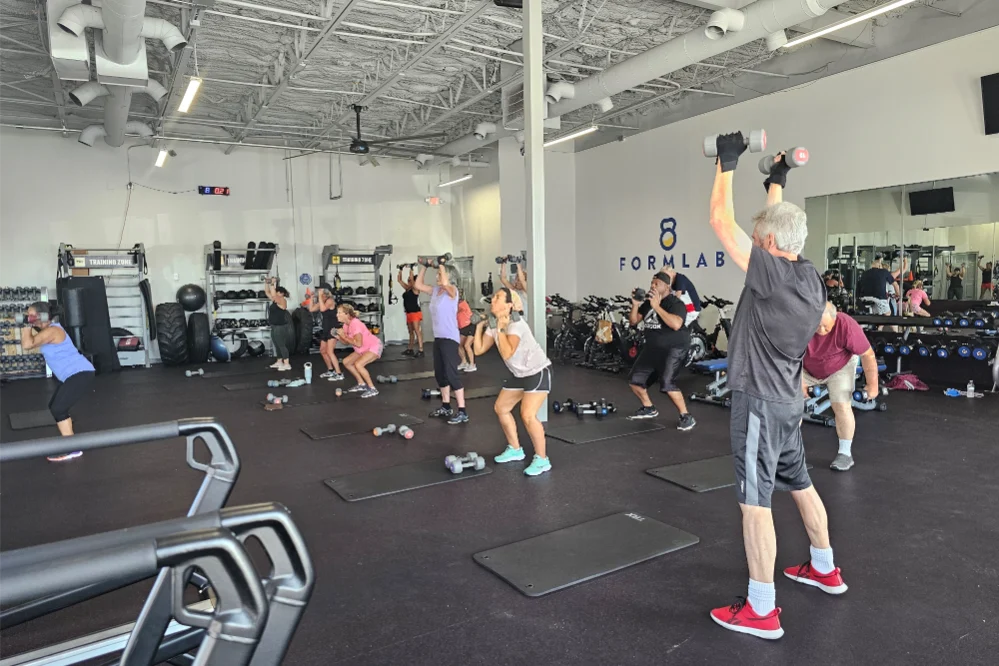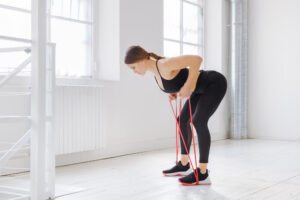Increasing the amount of weight you lift is a common goal for those involved in strength training. Lifting heavier weights not only builds muscle size and strength but also improves bone density and metabolic rate. However, progressing to heavier weights should be done cautiously and strategically to avoid injury and ensure consistent improvement. Here’s a guide on how to safely and effectively increase the weights you lift.
Understand the principles of progressive overload
Progressive overload is a fundamental principle in strength training, which involves gradually increasing the amount of stress placed on the body during exercise.
Key aspects of progressive overload
- Increase weight gradually: Add small increments to your lifts over time. This could mean adding 2-5% more weight when you can perform your current workout at the desired repetition range comfortably.
- Volume and intensity: Balance the weight, number of sets, and repetitions. Sometimes, increasing the number of repetitions or sets can be a form of overload before increasing weight.
Perfect your form
Before you focus on lifting heavier, ensure that your form is correct. Poor technique can lead to ineffective training or injuries.
Tips for perfecting form
- Hire a coach or trainer: A qualified trainer can provide immediate feedback and corrections on your lifting technique. If you are looking for a personal trainer in Brunswick who can help you lift heavier weights, visit HiTone Fitness.
- Record your lifts: Use video recordings to visualize and critique your form, or use apps specifically designed for tracking form and progress.
- Practice regularly: Consistency in practicing lifts with proper form is crucial before adding more weight.
Strengthen supporting muscles
Improving the strength of muscles that assist in major lifts (like squats, deadlifts, and bench presses) can help you safely lift heavier weights.
Supporting exercises
- Core work: Strengthening your core can improve stability and power in almost all lifts.
- Accessory movements: Incorporate exercises that strengthen smaller muscle groups involved in larger lifts, such as the rotator cuff muscles for bench pressing.
A great addition to this type of training are lifting belts. See how they help prevent back pain.
Warm-up properly
A proper warm-up increases blood flow to the muscles, enhances flexibility, and reduces the risk of injuries.
Effective warm-up strategies
- Dynamic stretching: Engage in movement-based stretching that mimics the exercises you will perform.
- Gradual loading: Start with lighter weights to build up to the heavier weights during your training session.
Use proper recovery techniques
Recovery is as important as the workout itself, especially when training with heavy weights.
Recovery techniques
- Adequate rest: Ensure you have days off between heavy sessions to allow muscles to recover.
- Nutrition and hydration: Fuel your body with the right nutrients and stay hydrated to support muscle repair and growth.
- Sleep: Aim for 7-9 hours of quality sleep per night to aid in recovery and performance.
Monitor your progress and adjust
Keep a detailed log of your workouts, including how much weight you lift, the number of repetitions, and how each session feels.
Monitoring tips
- Adjust as needed: If progress stalls, consider adjusting aspects of your training such as the amount of rest between sets, the type of exercises, or even the rep scheme.
- Set short-term goals: Having specific, measurable, and time-bound goals can keep you motivated and focused.
Final thoughts
Lifting heavier weights is an achievable goal with the right approach. By applying the principles of progressive overload, maintaining impeccable form, strengthening supporting muscles, properly warming up, focusing on recovery, and carefully monitoring your progress, you can safely and effectively increase the weights you lift.







